Research Article Open Access
The Effect of Caffeine and Choline Combinations on Short-term Visual and Auditory Memory
| Natasha Nagrecha, Vincent J Giannetti, Paula A Witt-Enderby, Jamie L McConaha and David A Johnson* | |
| Mylan School of Pharmacy and Graduate School of Pharmaceutical Sciences, Duquesne University, Pittsburgh, USA | |
| Corresponding Author : | David A Johnson, Ph.D Mylan School of Pharmacy and Graduate School of Pharmaceutical Sciences Duquesne University, 600 Forbes Avenue Pittsburgh, PA 15282, USA Tel: 412 396 5952 Fax: 412 396 4660 E-mail: johnsond@duq.edu |
| Received July 16, 2013; Accepted August 28, 2013; Published August 30, 2013 | |
| Citation: Nagrecha N, Giannetti VJ, Witt-Enderby PA, McConaha JL, Johnson DA (2013) The Effect of Caffeine and Choline Combinations on Short-term Visual and Auditory Memory. Clin Pharmacol Biopharm 2:112. doi:10.4172/2167-065X.1000112 | |
| Copyright: © 2013 Nagrecha N, et al. This is an open-access article distributed under the terms of the Creative Commons Attribution License, which permits unrestricted use, distribution, and reproduction in any medium, provided the original author and source are credited. | |
Visit for more related articles at Clinical Pharmacology & Biopharmaceutics
Abstract
The purpose of this randomized control trial was to determine whether choline in combination with several doses of caffeine, could facilitate short-term visual and verbal memory and attention in adult and middle aged human subjects with normal cognitive function. The effects of several doses of caffeine in combination with choline on short-term visual and verbal memory, blood pressure and heart rate were assessed in 125 healthy adult and middle-aged men and women using six standardized tests from the Wide Range Assessment of Memory and Learning, Second Edition (WRAML 2). Tests included: Verbal Learning, Design Memory, Picture Memory, Story Memory, Finger Windows and Number/Letter. Group comparisons utilized one-way analysis of variance with Dunnett’s test post-hoc. Subjects administered caffeine 25 mg/choline 2 g scored significantly higher on tests for short-term visual memory than the placebo group. Conversely, the caffeine 50 mg/choline 2 g treatment group scored significantly lower on tests for short-term verbal memory and attention than the placebo group. There were no significant differences in memory test scores between men and women and no significant changes in blood pressure or heart rate following administration of any of the treatment combinations. These results suggest that oral caffeine 25 mg in combination with choline 2 g may enhance short-term memory in healthy adults without affecting cardiovascular function.
| Keywords |
| Caffeine; Choline; Verbal memory; Visual memory; Cholinergic function |
| Introduction |
| Current prescription medications used to treat memory loss are limited by low efficacy and significant side effects [1]. As an alternative, dietary substances such as coffee, tea, eggs, and soya have been studied for potential beneficial effects on memory [2,3]. Caffeine, the most commonly consumed central nervous system stimulant, is found in a number of dietary products including beverages, energy drinks and other foods. The mechanism for the stimulant action of caffeine is disinhibition of a number of neurotransmitter systems in the CNS via blockade of the neuromodulator adenosine [4,5]. Caffeine use is well known to enhance cognitive performance, and several studies have demonstrated facilitation of memory [6,7] but the results have not been consistent, with other studies finding either no effect [8,9] or impairment of short-term memory [10]. Moreover, in higher doses caffeine can produce significant cardiovascular and other adverse effects [11]. |
| The role of cholinergic neurotransmission in memory and other cognitive functions has been recognized since the 1970s [12,13]. Dysfunction of cholinergic neurotransmission results in memory loss and is thought to play a significant role in Alzheimer’s disease. As such, cholinergic neurotransmission is a prime target for memory loss associated with Alzheimer’s disease [13]. Choline, a synthetic precursor of the neurotransmitter acetylcholine (ACh) is a dietary component of dairy products. Choline containing substances such as phosphatidylcholine and lecithin have undergone clinical testing but have not been found to improve memory performance [14,15]. |
| While the transporter for high affinity choline uptake into cholinergic neurons is saturated under resting conditions, when physiologically active, the rate of synthesis and release of ACh can be facilitated via increased availability of free choline [16]. |
| Therefore, to the extent that caffeine via disinhibition of adenosine can increase neuronal firing, the combination of caffeine and choline may potentially facilitate memory via an increase in the neuronal uptake of choline and release of ACh. The aim of the current study was to test the effects of choline in combination with increasing doses caffeine on attention and short-term visual and auditory memory in healthy adults 35 to 60 years of age. |
| Materials and Methods |
| Materials |
| Four capsules (Pleasant Hills Apothecary), identical in appearance, were administered to each subject. The capsules contained either: magnesium sterate (placebo), choline bitartarate 2 g alone, or combinations of 2 g choline bitartarate with caffeine 25, 50 or 100 mg (Table 1). |
| Design and sampling |
| This study was approved by the Institutional Review Board of Duquesne University to ensure compliance with NIH standards for human subjects in research. The study was designed as a randomized control trial. Subjects were recruited through advertisements on the campus of Duquesne University, Craigslist and the Centre for Behavioral and Decision Research at the University of Pittsburgh. Testing was performed on the campus of Duquesne University. Each subject visited the testing center once for the testing session. Exclusion criteria for participation in the study included the use of alcohol, or drugs with sedating side effects such as antihistamines and sedative--â┬?┬Éhypnotics, or stimulants, illicit drugs or memory enhancing medications. Subjects were also excluded if they had an average caffeine intake of less than 50 mg/day (equivalent to less than half cup of coffee), or more than 300 mg/day day (more than three cups of coffee a day). The rationale was to exclude those subjects (<50 mg/day caffeine consumption) who might be overly sensitive to caffeine or those subjects (>300 mg/day caffeine consumption) likely to have developed tolerance to the effects of the drug. Also, because caffeine can affect cardiovascular and other system functions, subjects were excluded from the study if they had any of the following conditions: uncontrolled hypertension, history of heart failure, cardiac arrhythmias, previous heart attack, history of seizures, kidney disease, pregnancy or breast feeding. Subjects were invited to enroll in the study if they met all study criteria. They were briefed on the details of the study both verbally and in writing and if they gave their consent, were enrolled. The subjects were compensated $25 for participation in the study. |
| Memory testing |
| Subjects were asked to refrain from consuming any medication, food or drink containing caffeine for at least eight hours prior to their scheduled appointment. Upon arrival at the testing center, subjects were randomly divided into five treatment groups balanced for gender with 25 subjects per group. Testing sessions were randomized and double blinded; neither the subject nor the tester knew which treatment was administered prior to testing. Blood pressure and heart rate were recorded prior to and thirty minutes following capsule administration using an Omron HEM-711 DLX automatic blood pressure monitor. Forty minutes after administration of the capsules, the memory tests were administered. The study was conducted using standardized tests from the Wide Range Assessment of Memory and Learning Second Edition. The WRMAL 2 is a standardized and validated psychometric instrument commonly used for measuring performance in humans. The WRAML 2 provides an integrated set of memory tests that can be used across a life span. Six tests were administered: Verbal Learning, Design Memory, Picture Memory, Story Memory, Finger Windows and Number/Letter tests. Raw scores from these tests were combined to give three indices: Verbal Memory Index, Visual Memory Index and the Attention/ Concentration Index. The indices are scores that have been standardized, accounting for the age of the subject. This allows for direct comparisons of scores between subjects of different ages. The three indices were measures of the verbal, visual and the attention/ concentration components of memory, respectively. The indices were combined to form a General Memory Index, which is a reflection of the overall short-term memory performance of the subject. Based on a nationwide validation of the test, each of the indices has a mean of 100 and standard deviation of 15 (Figure 1). The item separation reliability for all of the subtests ranged from 0.99 to 1.00 with the median coefficient alpha for the indices ranging from 0.86 (attention/ concentration index) to 0.93 (general memory and screening memory index) [17]. Both the general memory index and working memory scale demonstrated a convergent validity of 0.60 with the Wechsler Memory Scale III [18]. |
| Verbal memory: To assess short term verbal memory a short story was read to each of the subjects after which the tester asked the subject to recollect as much information from the story as possible. A verbal memory test was also administered. This test included a list of words that was read to the subjects. They were then asked to repeat as many words from the list as possible. Raw scores from the Story Memory Test and Verbal Learning Test were combined and converted to Verbal Memory Index standardized scores. |
| Visual memory tests: To assess visual memory subjects were administered a Picture Memory Test. They were asked to look at a picture carefully for ten seconds and then were shown another picture that was similar, but with a few changes. The subjects were asked to identify the differences between the two pictures. Subjects were also administered a Design Memory Test. Subjects were shown five design cards. Each card was viewed for 10 seconds. The cards were then withdrawn and the subjects were asked to redraw the designs. Raw scores from the Picture Memory Test and Design Memory Test were combined and converted to Visual Memory Index standardized scores. |
| Attention/Concentration tests: To assess the effects of the treatments on attention and concentration, study subjects were given the Finger-Window Test. For this test the tester pointed into windows (holes) on a card. The subjects were asked to observe the order in which the windows were pointed to and then asked to repeat the sequence. A Number/Letter Test was also administered. During this test, subjects listened to the tester who spoke a series of numbers and letters. Study subjects were asked to repeat the numbers and letters in the same order. Raw scores from the Fingers Window Test and Number/Letter Test were combined and converted to Attention/Concentration Index standardized scores. |
| Statistical analysis |
| A power analysis was performed after testing 78 subjects to determine the number of subjects in each treatment group that would be necessary to provide 80% power for statistical analysis of the primary endpoint, the General Memory Index. The analysis revealed that 25 subjects per treatment group were sufficient to adequately power the study. |
| The mean arterial pressures at baseline (MAP 0) and 30 minutes following drug administration (MAP 30) were compared between the groups using one-way ANOVA followed by Dunnet’s test post hoc. Differences in blood pressure before and 30 minutes following treatment were assessed for each patient using a paired t-test. The raw scores from each of the six memory tests were converted to standardized scores using the WRAML 2 Administration and Technical Manual. Performance scores obtained from the caffeine/choline treatments were compared to the scores from the placebo group. Verbal Memory Index, Visual Memory Index, Attention Concentration Index, Screening Memory Index and General Memory Index scores were also compared between the treatment groups by one-way ANOVA. A post hoc Dunnett’s test was used to compare the mean scores of treatment groups to the placebo group. A D’Agostino-Pearson omnibus test was performed to confirm normal distribution. A 2-way ANOVA was used to compare performance between males and females. Graphpad Prism 5.0 (GraphPad Software Inc., La Jolla, CA) was used for all statistical analyses. Significance was defined as P<0.05. |
| Results |
| Approximately 168 people responded to the advertisement for the study and were interviewed. Of those, 43 either did not meet the inclusion criteria or decided not to participate in the study. The study enrolled 125 subjects. Each treatment group included 12 males and 13 females where the mean ages between treatment groups ranged from 39 to 44 years (Table 2). No significant differences in age were observed between groups (P>0.05). Also, no significant difference in memory performance was observed between male and female subjects. |
| Blood pressure and heart rate |
| The resting MAP and heart rate for all patients were within normal range before and following drug administration and no significant changes in MAP were observed within or between groups following administration of the capsules. Similarly, there were no significant changes in heart rate following any of the treatments compared to placebo; however, in the subjects given caffeine 50 mg/choline, a small but statistically significant decrease in heart rate was observed 20 minutes following drug administration (P<0.05) compared to baseline. |
| Cognitive function |
| General memory index: There was a significant treatment effect in the General Memory Index, (F (4,119)=13.32, P<0.0001) between groups. Specifically, the caffeine 50 mg/choline treatment group scored significantly lower than the Placebo group while the caffeine 25 mg/choline scored significantly higher than placebo (Tukey’s test P<0.05; Figure 2, Table 3). Consistent with the results of the General Memory Index, visual memory improved in those subjects consuming the lower 25 mg caffine/choline dose compared to the placebo group (F (4,124)=8.818, P<0.0001; Figure 3, Table 4). With both the verbal memory and attention/concentration indices (Figures 4 and 5, Tables 5 and 6), the group administered the caffeine 50 mg/choline treatment scored significantly lower compared to placebo (F (4,124)=5.469, P=0.0004 and (F (4,119)=4.863, P=0.0012, respectively). No significant differences were observed between the other treatment groups and placebo for verbal memory, visual memory or attention/concentration scores. Overall, there were no significant differences in the performance of males compared to females, although there was a trend toward better performance by females in verbal memory (P=0.08). |
| Discussion |
| The study found that, overall 25 mg caffeine/choline combination dose facilitated short-term memory, while the 50 mg caffeine/choline dose significantly impaired short-term memory and attention. The 100 mg caffeine/choline dose and the choline alone treatments had no effect on short-term memory or attention compared to placebo. None of the treatments resulted in clinically significant changes in mean blood pressure or heart rate. |
| The strengths of the current study include the use of several doses of caffeine, and testing for multiple components of short-term memory using a standardized reliable and valid testing package. The mean scores for the placebo group were close to the age-adjusted standardized scores of 100 for the WRAML 2 testing battery. This result suggests that the memory tests were administered properly and that the performance of the test subjects was similar to the memory performance of the general population. A weakness of the study was that it tested only a single dose of choline (2 g). The rational for the selection of a single choline dose was that multiple doses would have decreased the overall statistical power of the study by increasing the number of treatment groups. A large dose (2 g) was selected because it would be sufficient to saturate the high-affinity choline transporter under conditions of stimulation of cholinergic neurons. However, the volume of the choline dose was also large. In a future study it would be worthwhile to determine whether smaller doses of choline could produce results similar to the dose used in this trial. |
| The rational for testing the combination of caffeine and choline for the potential to enhance short-term memory was two-fold. First, the use of a general stimulant such as caffeine could increase the activation of cholinergic neurons and thereby facilitate the uptake of increased available choline resulting ultimately in enhanced cholinergic neurotransmission. Second, by supplementing choline to facilitate cholinergic tone, it may be possible to achieve selectivity for cholinergic neurotransmission with lower doses of caffeine that commonly result in stimulant and adverse cardiovascular effects. The results of this study support these hypotheses. The results are consistent with the variable findings of other published studies showing caffeine could facilitate, impair or have no effect on memory. A number of studies examined the effect of caffeine on human behavior and reported beneficial or no effects of caffeine on memory performance. Specifically, Schmitt et al. [19] demonstrated that caffeine in low doses did not affect memory function and attention in middle-aged and elderly subjects and Reidal et al. [20], demonstrated that 250 mg of caffeine attenuated scopolamine induced memory impairments. However, Terry and Phifer [21] showed that 100 mg of caffeine significantly reduced the recall of words in an AVLT (Auditory-Verbal Learning Test) test and Erikson et al. [22] showed that caffeine impaired memory in females who were administered 2 mg/kg and 4 mg/kg of caffeine. The results of the current study are consistent with the findings of other investigations that different doses of caffeine can affect memory differently. The conflicting results of previous studies might be explained by differences in testing paradigms, subject composition of each study and/or the doses of caffeine used either alone or in combination with other substances. |
| Caffeine is among the most popular of stimulants with ergogenic, psycho-stimulant, and nootropic properties. At pharmacologic doses, caffeine acts to antagonize the inhibitory neuromodulator adenosine via blockade of A1 and A2 receptors. As a result, caffeine can increase the release of a number of neurotransmitters in the central nervous system including dopamine, serotonin norepinephrine and amino acids [4]. The effect of caffeine alone on ACh release is modest but can be facilitated by the addition of exogenous choline [23]. Choline, the synthetic precursor of ACh, has been the focus of a number of investigations to determine whether it can facilitate memory. The results for acute improvements in memory function have been modest at best and the use of choline or other ACh precursors to treat cognitive impairments associated with dementia has not demonstrated clinical utility [24]. The limited efficacy of choline alone on memory may be due, in part, to saturation of the high affinity choline transporter when cholinergic neurons are inactive. However, when cholinergic neurons are stimulated, choline uptake of choline increases and cholinergic neurotransmission facilitated [16]. |
| The finding that the choline alone was without affect on short-term visual or verbal memory, or attention is consistent with previous studies [24]. For treatment groups that were administered combination doses of caffeine/choline, there was facilitation of short-term memory with the 25 mg caffeine/choline dose but significant impairment with the 50 mg caffeine/choline dose and no effect in short-term memory with the 100 mg caffeine/choline dose. There are several possible explanations for these results. It is not unusual for drugs that affect cognition to have an inverted U shaped dose response curve. This could account for the facilitation of short-term memory with the 25 mg caffeine/ choline dose and an impaired response to caffeine 50 mg caffeine/ choline dose. Since CNS function is the result of a homeostatic balance between excitatory and inhibitory neurotransmitter systems, it may also be possible that the lower caffeine/choline doses selectively activate cholinergic neurons but not other neurotransmitters, while the higher 100 mg caffeine/choline dose may activate additional neurotransmitter systems with a resultant masking of the effect of cholinergic activation. |
| An examination of the results from the individual components of the General Memory Index, verbal memory, visual memory and attention, found that for each memory component measured mean performance was increased with the 25 mg caffeine/choline dose and decreased with 50 mg caffeine/choline. For visual memory, however, there was a statistically higher score for the 25 mg caffeine/choline treatment compared to placebo, while with the 50 mg caffeine/choline treatment there were significantly lower scores for verbal memory and attention. It is possible that the impaired performance in verbal memory with the 50 mg caffeine/choline dose may be secondary to decreased attention. This hypothesis is supported by data from the Attention/Concentration Index, which was significantly reduced in the 50 mg caffeine/choline group compared to the placebo. |
| Patients with cardiovascular disease are commonly cautioned to limit caffeine intake [25]. Despite the fact that caffeine is well known to affect blood pressure, none of the treatments resulted in clinically significant changes in mean blood pressure or heart rate. This may be explained, in part, by the inclusion criterion of the study that required regular moderate caffeine consumption prior to the study. This is supported by the lack of a physiologically significant cardiovascular response for even the highest 100 mg dose of caffeine. |
| The finding that facilitation of short-term memory was observed with the lowest dose (25 mg caffeine/choline) suggests that low dose caffeine with choline may be both efficacious and relatively safe and may provide memory-enhancing effects in individuals who cannot tolerate higher doses of caffeine. Therefore, future studies are planned for elderly patients with mild cognitive memory impairments and concomitant cardiovascular disease. In summary, the study findings suggest that a low dose caffeine/choline regimen may be effective for enhancing short-term memory without affecting cardiovascular function. |
| Acknowledgements |
| The authors wish to thank Taylor Gentile and John Slater for their participation in the project and the Mylan School of Pharmacy and the Graduate School of Pharmaceutical Sciences of Duquesne University for funding the study with a Translational Research Grant. Dr. Richard J. Wurtman who first suggested the possibility of synergism between caffeine and choline. |
| References |
References
- Standert DG, Roberson ED (2011) Treatment of central nervous system degenerative disorders. In: Brunton LL, Goodman & Gilman's, The pharmacological basis of therapeutics, 12th edition, McGraw-Hill, New York 621-622.
- File SE, Jarrett N, Fluck E, Duffy R, Casey K, et al. (2001) Eating soya improves human memory. Psychopharmacology (Berl) 157: 430-436.
- Unno K, Takabayashi F, Yoshida H, Choba D, Fukutomi R, et al. (2007) Daily consumption of green tea catechin delays memory regression in aged mice. Biogerontology 8: 89-95.
- Nehlig A, Daval JL, Debry G (1992) Caffeine and the central nervous system: mechanisms of action, biochemical, metabolic and psychostimulant effects. Brain Res Brain Res Rev 17: 139-170.
- Fisone G, Borgkvist A, Usiello A (2004) Caffeine as a psychomotor stimulant: mechanism of action. Cell Mol Life Sci 61: 857-872.
- Angelucci ME, Cesário C, Hiroi RH, Rosalen PL, Da Cunha C (2002) Effects of caffeine on learning and memory in rats tested in the Morris water maze. Braz J Med Biol Res 35: 1201-1208.
- Smith AP, Clark R, Gallagher J (1999) Breakfast cereal and caffeinated coffee: effects on working memory, attention, mood, and cardiovascular function. Physiol Behav 67: 9-17.
- Loke WH (1988) Effects of caffeine on mood and memory. Physiol Behav 44: 367-372.
- Rees K, Allen D, Lader M (1999) The influences of age and caffeine on psychomotor and cognitive function. Psychopharmacology (Berl) 145: 181-188.
- Foreman N, Barraclough S, Moore C, Mehta A, Madon M (1989) High doses of caffeine impair performance of a numerical version of the Stroop task in men. Pharmacol Biochem Behav 32: 399-403.
- Noordzij M, Uiterwaal CS, Arends LR, Kok FJ, Grobbee DE, et al. (2005) Blood pressure response to chronic intake of coffee and caffeine: a meta-analysis of randomized controlled trials. J Hypertens 23: 921-928.
- Bartus RT, Dean RL 3rd, Beer B, Lippa AS (1982) The cholinergic hypothesis of geriatric memory dysfunction. Science 217: 408-414.
- Davies P, Maloney AJ (1976) Selective loss of central cholinergic neurons in Alzheimer's disease. Lancet 2: 1403.
- Blusztajn JK, Liscovitch M, Mauron C, Richardson UI, Wurtman RJ (1987) Phosphatidylcholine as a precursor of choline for acetylcholine synthesis. J Neural Transm Suppl 24: 247-259.
- Higgins JP, Flicker L (2003) Lecithin for dementia and cognitive impairment. Cochrane Database Syst Rev CD001015.
- Jope RS (1982) Effects of phosphatidylcholine administration to rats on choline in blood and choline and acetylcholine in brain. J Pharmacol Exp Ther 220: 322-328.
- Adams W, Reynolds CR (2008) Essentials of WRAML2 and TOMAL2 Assessment: Essentials of Psychological Assessment, Volume 73, John Wiley and Sons, New Jersey.
- Sheslow D, Adams W (2003) Wide Range Assessment of Memory and Learning. Second Edition; Administration and Technical Manual. Western Psychological Services, California.
- Schmitt JA, Hogervorst E, Vuurman EF, Jolles J, Riedel WJ (2003) Memory functions and focussed attention in middle-aged and elderly subjects are unaffected by a low, acute dose of caffeine. J Nutr Health Aging 7: 301-303.
- Riedel W, Hogervorst E, Leboux R, Verhey F, van Praag H, et al. (1995) Caffeine attenuates scopolamine-induced memory impairment in humans. Psychopharmacology (Berl) 122: 158-168.
- Terry WS, Phifer B (1986) Caffeine and memory performance on the AVLT. J Clin Psychol 42: 860-863.
- Erikson GC, Hager LB, Houseworth C, Dungan J, Petros T, et al. (1985) The effects of caffeine on memory for word lists. Physiol Behav 35: 47-51.
- Johnson DA, Ulus IH, Wurtman RJ (1992) Caffeine potentiates the enhancement by choline of striatal acetylcholine release. Life Sci 51: 1597-1601.
- Amenta F, Parnetti L, Gallai V, Wallin A (2001) Treatment of cognitive dysfunction associated with Alzheimer's disease with cholinergic precursors. Ineffective treatments or inappropriate approaches? Mech Ageing Dev 122: 2025-2040.
- Montagnana M, Favaloro EJ, Lippi G (2012) Coffee intake and cardiovascular disease: virtue does not take center stage. Semin Thromb Hemost 38: 164-177.
Tables and Figures at a glance
| Table 1 | Table 2 | Table 3 |
| Table 4 | Table 5 | Table 6 |
Figures at a glance
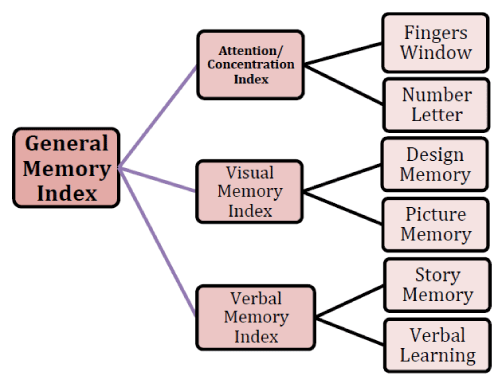 |
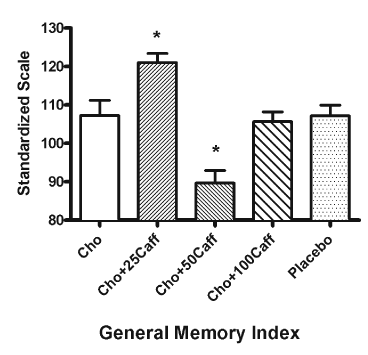 |
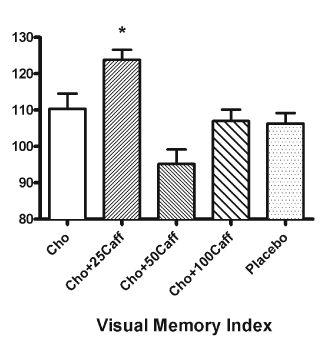 |
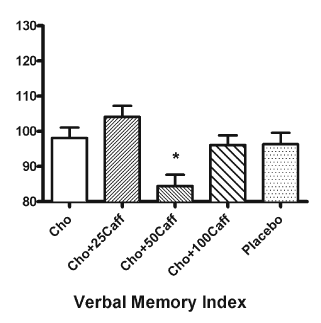 |
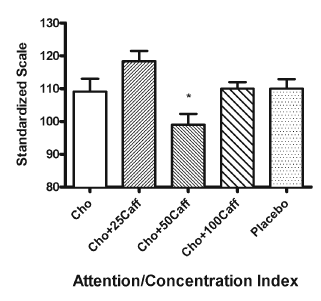 |
| Figure 1 | Figure 2 | Figure 3 | Figure 4 | Figure 5 |
Relevant Topics
- Applied Biopharmaceutics
- Biomarker Discovery
- Biopharmaceuticals Manufacturing and Industry
- Biopharmaceuticals Process Validation
- Biopharmaceutics and Drug Disposition
- Clinical Drug Trials
- Clinical Pharmacists
- Clinical Pharmacology
- Clinical Research Studies
- Clinical Trials Databases
- DMPK (Drug Metabolism and Pharmacokinetics)
- Medical Trails/ Drug Medical Trails
- Methods in Clinical Pharmacology
- Pharmacoeconomics
- Pharmacogenomics
- Pharmacokinetic-Pharmacodynamic (PK-PD) Modeling
- Precision Medicine
- Preclinical safety evaluation of biopharmaceuticals
- Psychopharmacology
Recommended Journals
Article Tools
Article Usage
- Total views: 20318
- [From(publication date):
October-2013 - Apr 02, 2025] - Breakdown by view type
- HTML page views : 15748
- PDF downloads : 4570
Peer Reviewed Journals
Make the best use of Scientific Research and information from our 700 + peer reviewed, Open Access Journals
